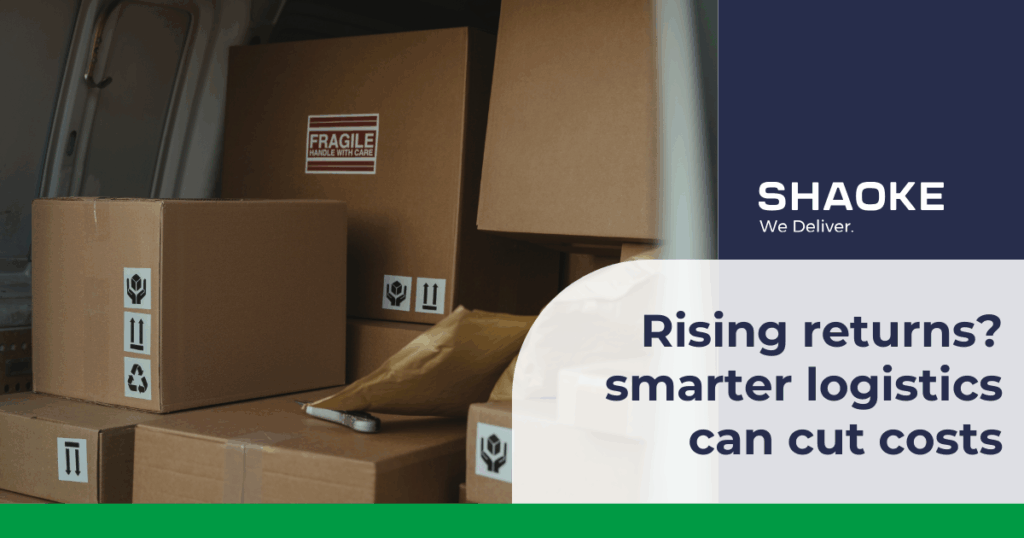
In the past, logistics mainly focused on getting products out the door — but today, what’s coming back is just as critical. Return rates have surged, particularly in e-commerce, where average return rates are now around 20-30%, compared to less than 10% for brick-and-mortar stores (National Retail Federation, 2024). For some categories like apparel, it’s even worse: clothing purchases online are returned at rates exceeding 40%. As consumer habits shift toward “bracketing” (buying multiple sizes or colors to return extras), companies without a solid reverse logistics strategy are watching profits quietly erode.
The financial impact is sharp. U.S. retailers lost an estimated $743 billion to returns in 2023 alone, up from $643 billion in 2022 (NRF and Appriss Retail, 2024). Each return doesn’t just cost the price of lost inventory; it triggers additional expenses like inspection, repackaging, restocking, and sometimes even liquidation. For some businesses, processing a return can cost up to 66% of the item’s original price (Optoro, 2023). In a margin-tight sector like e-commerce, smarter reverse logistics isn’t just a nice-to-have, it’s a survival strategy.
One key to managing the return surge is early intervention. Studies show that clearer product descriptions, better sizing tools, and user-generated photos can lower return rates by 15-20% (Narvar Consumer Report, 2023). More advanced players are using AI-powered “return likelihood scores” to predict which transactions are most at risk, allowing for proactive customer service outreach or even alternative incentives like partial refunds without sending items back. Retailers like Amazon and Walmart already deploy “keep it” refund options for low-value returns, balancing cost control with customer satisfaction.

Another game-changer is centralized return hubs. Instead of routing all returns back to the original warehouse, companies like Zalando and ASOS now consolidate returns at regional centers. This allows faster inspection, quicker restock of items in resaleable condition, and major cost savings, cutting per-return processing costs by up to 25% (McKinsey, 2023). In Germany, Deutsche Post DHL launched a “returns consolidation service” for fashion brands, reporting a 15% faster resale cycle on returned goods. Efficient reverse flows can turn a costly return into a fast secondary sale.
Technology is playing a bigger role too. Return automation tools like Narvar, Loop Returns, and Happy Returns streamline the customer experience and reduce manual work. Some companies using return automation report up to 40% lower handling costs and improved resale recovery rates (ReturnLogic, 2024). Even blockchain is being tested in some pilot projects to verify product authenticity and track condition, especially for high-value items like electronics and luxury goods.
In short, reverse logistics is no longer an afterthought – it’s a battleground for protecting margins and customer loyalty. Brands that invest now in smarter, faster, and more customer-friendly return processes will be better positioned to thrive, even as shopping behavior keeps evolving. Forward-thinking logistics and e-commerce companies should treat returns not just as a cost center, but as a strategic advantage.
Sources:
- National Retail Federation and Appriss Retail, “2024 Returns Report”
- McKinsey, “Mastering Returns: How Smart Retailers Turn Reverse Logistics into a Competitive Advantage,” 2023
- Optoro, “The True Cost of Returns,” 2023
- Narvar, “State of Returns Report,” 2023
- ReturnLogic, “2024 Reverse Logistics Benchmarks”

